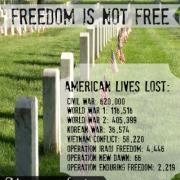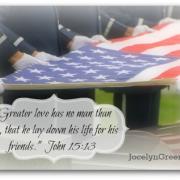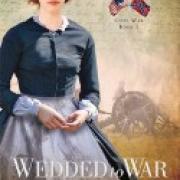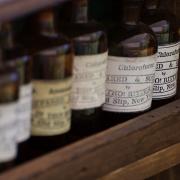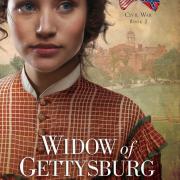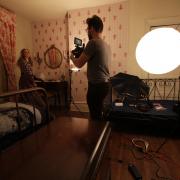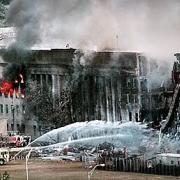Publishing and promoting a book is definitely a team effort, and one of the teams whose work I am most fascinated by is the one who created this book trailer for Wedded to War, the first book in my Heroines Behind the Lines series. Read on for an interview with Phil Jacoby, creative producer of Mothlight Creative, the company who made this happen. (Behind the scenes photos from the filming days included!)
*See the book trailer here--and then come on back to read how they did it!
Jocelyn: Watching the book trailer, I could tell that you knew more about Wedded to War than just what was on the back cover. You used a piece of dialogue, the characters looked so much the way I described them in the book, and I recognized all the scenes in the trailer as actually being part of the plot. How did you do that? Did one of you read the book or get the cliff notes version from someone at RiverNorth? You were spot on!
Phil: We were given a manuscript by RiverNorth. We all read a bit of it, but Luke, our director, read a good deal of the book. We knew we wanted to be able to capture the characters, at least the main characters, as closely as possible. And to do that in the length of a single trailer we knew we would have to understand the story and the relationships as well as any reader might. In order to do that, we had to read it (or at least most of it).
[[{"type":"media", "view_mode":"media_large", "fid":"733", "attributes":{"class":"media-image wp-image-737", "typeof":"foaf:Image", "style":"", "width":"672", "height":"378", "title":"Screen Shot 2012-06-29 at 2 18 22 PM", "alt":""}}]] Screen shot from the trailer
Jocelyn: Take me through the process of creating a book trailer, from the time you accept the job to completion. Briefly, what are the steps? How long does it take?
Phil: It all depends on the project. We pitched a few directions to the publisher and the decision was made to proceed with the live-action option. Budget and time dictate (to an extent) what is possible in any project so we had to come up with a way to tell the story without overtelling it, lest we run out of time and/or resources. Once we had mapped out which parts of the story we wanted to hint at in the trailer we spent a few days– maybe a week– planning out shots, locations, finding actors, wardrobe, etc. From the time the project was approved to delivering the final product was roughly a month or so.
[[{"type":"media", "view_mode":"media_large", "fid":"922", "attributes":{"class":"media-image wp-image-728", "typeof":"foaf:Image", "style":"", "width":"717", "height":"477", "title":"settinghospitaltent", "alt":""}}]] Setting up the hospital tent
[[{"type":"media", "view_mode":"media_large", "fid":"734", "attributes":{"class":"media-image wp-image-738", "typeof":"foaf:Image", "style":"", "width":"672", "height":"378", "title":"Screen Shot 2012-06-29 at 2 26 11 PM", "alt":""}}]] Screen shot from trailer: inside the tent
Jocelyn: Where did you find your actors and actresses (including extras)? I noticed in one of your blog posts you mentioned some Mothlight staff were in the trailer too. Can you identify which ones those were? Phil: The actors who played the two main characters [Charlotte and Caleb] were hired from a local talent agency. We often pull from a list of people we know to act in videos, but we wanted to find people who fit the descriptions given in the book. The rest of the actors were Mothlight staff and friends. Two of the soldiers are Mothlight employees. The other three soldiers are friends of the staff. The woman who is the friend of the main character (seen giving birth in the trailer) [Ruby] is our director's wife and the villain of the story– the mustached character– was played by me.
[[{"type":"media", "view_mode":"media_large", "fid":"923", "attributes":{"class":"media-image wp-image-729", "typeof":"foaf:Image", "style":"", "width":"717", "height":"477", "title":"instructingcaleb", "alt":""}}]] Giving instructions to actor who played Caleb
[[{"type":"media", "view_mode":"media_large", "fid":"735", "attributes":{"class":"media-image wp-image-739", "typeof":"foaf:Image", "style":"", "width":"672", "height":"378", "title":"Screen Shot 2012-06-29 at 2 23 52 PM", "alt":""}}]] Screen shot from trailer: Caleb and Charlotte
Jocelyn: So you played Phineas! I love it! [Readers, see Phil's photo when he's not playing my villain on this page. Very dastardly expression on the third of his photos!] Where did you find the costumes and set pieces? Loved the amputation saw, by the way.
Phil: The costumes and most of the props were furnished by a couple who live just outside of Pittsburgh. She is a writer for a local newspaper and he is a professor at a local university. In their spare time they are civil war re-enactors. When I told them about your book they looked it up and knew exactly which historical characters were being referenced and what the time period would have looked and felt like. All of the wardrobe belonged to them as well as the surgical tools and all of the weapons. The indoor sets and other various accessories were prepared for us by our co-director's wife.
[[{"type":"media", "view_mode":"media_large", "fid":"924", "attributes":{"class":"media-image wp-image-730", "typeof":"foaf:Image", "style":"", "width":"717", "height":"477", "title":"preppingpatient", "alt":""}}]] Behind the scenes: prepping the patient
[[{"type":"media", "view_mode":"media_large", "fid":"736", "attributes":{"class":"media-image wp-image-740", "typeof":"foaf:Image", "style":"", "width":"672", "height":"378", "title":"Screen Shot 2012-06-29 at 2 28 08 PM", "alt":""}}]] Screen shot from trailer
Jocelyn: I read on your Web site that the music you used was an original score you created, as well. I am so impressed! You did a beautiful job capturing the spirit and drama of Wedded to War with that music. How do you determine the best tone (in terms of music) for a book trailer?
Phil: The score was created by Paul, one of our animators, and myself. We decided what the general tone of the trailer was and then added a pace to it. Music and sound tend to tell an audience how to feel about something, so even if we filmed images that we thought of as sad or tense, the audience would not necessarily fully believe those things unless the music told them to. I came up with a melody on guitar and Paul came up with a cooperative melody on piano. Once we had those things figured out all it took was placing percussion and small musical textures in the right places to create the dynamic shifts. We are pretty happy with how it turned out.
[[{"type":"media", "view_mode":"media_large", "fid":"925", "attributes":{"class":"media-image wp-image-731 ", "typeof":"foaf:Image", "style":"", "width":"717", "height":"477", "title":"housenotburning", "alt":""}}]] Behind the scenes: "Charlotte" runs from a building that is not burning. The team made it look as though it was on fire for the trailer using Adobe After Effects. Cool, huh?
Jocelyn: Well I was more than pretty happy with it--I was thrilled. It was one of the first things I noticed. Were there any surprises or challenges that you encountered during the filming? Phil: I'm don't know if there were any surprises, but the heat was certainly a challenge. We filmed the trailer in mid July and the costumes, save for a couple of the dresses, were made of heavy wool. We were fortunate to have beautiful days on which to film, but it meant that we were right under the sun for the outdoor shots and the indoor shots were filmed in house that has no air conditioning.
[[{"type":"media", "view_mode":"media_large", "fid":"926", "attributes":{"class":"media-image aligncenter wp-image-732", "typeof":"foaf:Image", "style":"", "width":"717", "height":"477", "title":"cameramen", "alt":""}}]]
Jocelyn: That sounds like the way the characters experienced those scenes too--very hot, no air conditioning. Sweat is authentic. :) Now, last question. I’ve seen a lot of book trailers, some more impressive than others. In your professional opinion, what makes a trailer effective? Phil: A trailer is not supposed to tell you everything. A trailer is supposed to entice you. It is supposed to show you something indicative without spelling things out for you. I think a good trailer, be it for a film or a book, knows when to stop. It invites you, but it doesn't let you in. Jocelyn: Thank you so much, Phil, for your work on the trailer and for taking the time to answer all my questions! For more information about Mothlight Creative, visit the Web site here. BONUS: Book cover photo shoots are something else I find very interesting. We haven't done that for my books, but if you want to know a little about how it's done, check out this blog post from Joanne Bischof about the cover for her book Be Still, My Soul. Also super fun is this music video by Brandon Hill of two historical book cover photo shoots. Just so cool. And finally, a behind the scenes post on the cover shoot for Laura Frantz's upcoming book, Love's Awakening.
[[{"type":"media", "view_mode":"media_large", "fid":"927", "attributes":{"class":"media-image wp-image-741", "typeof":"foaf:Image", "style":"", "width":"672", "height":"378", "title":"Screen Shot 2012-06-29 at 2 22 18 PM", "alt":""}}]] Parting shot from trailer

